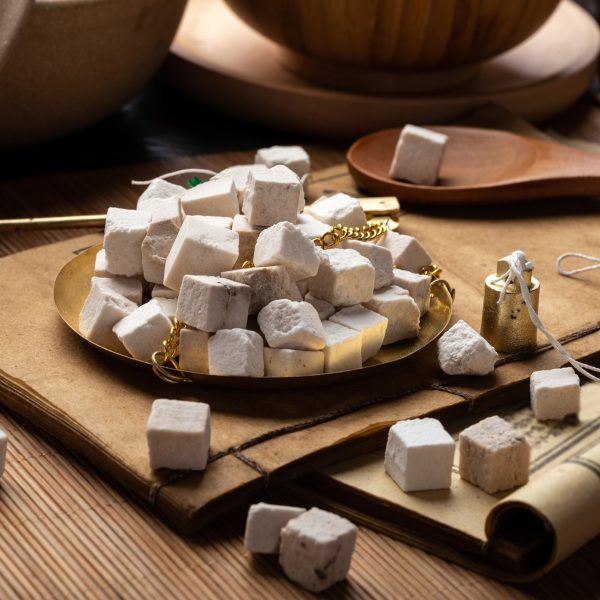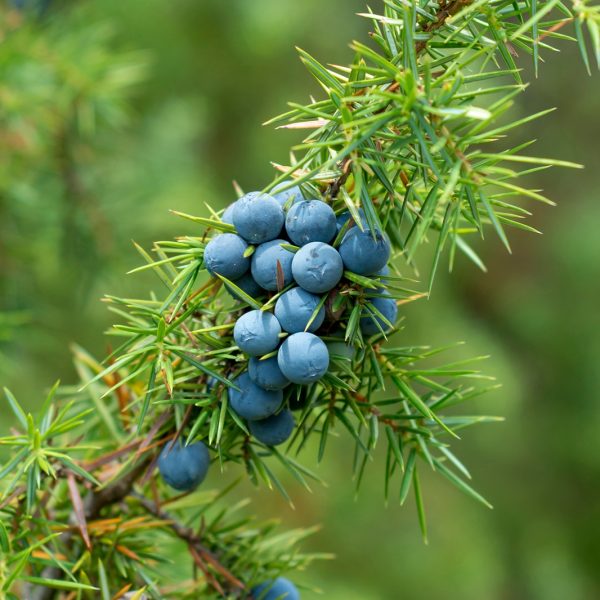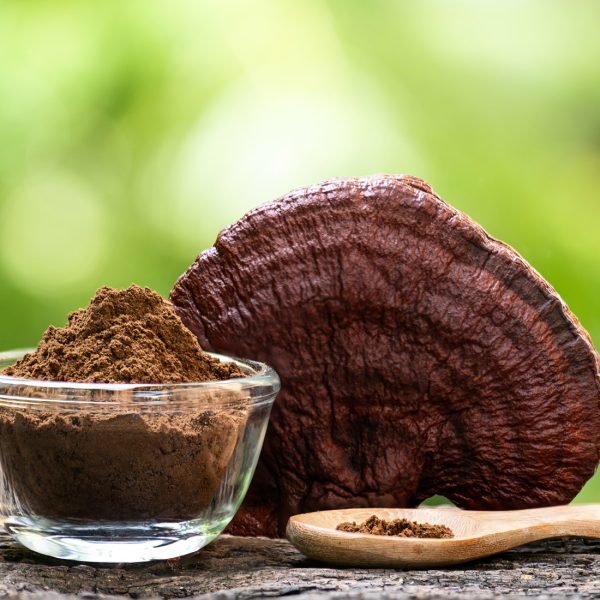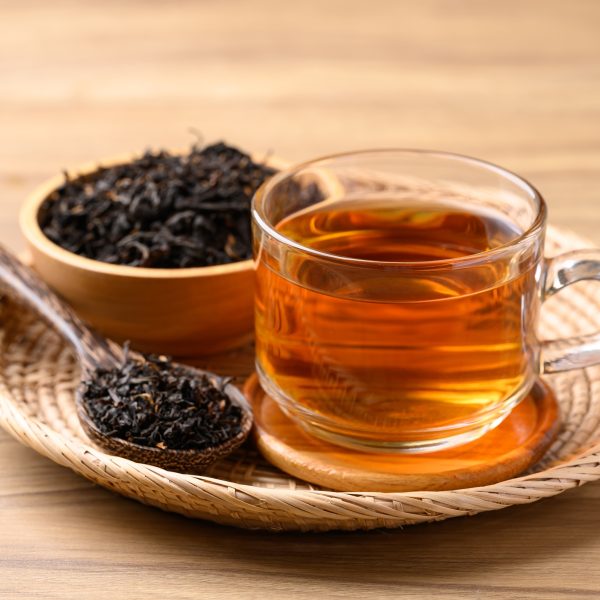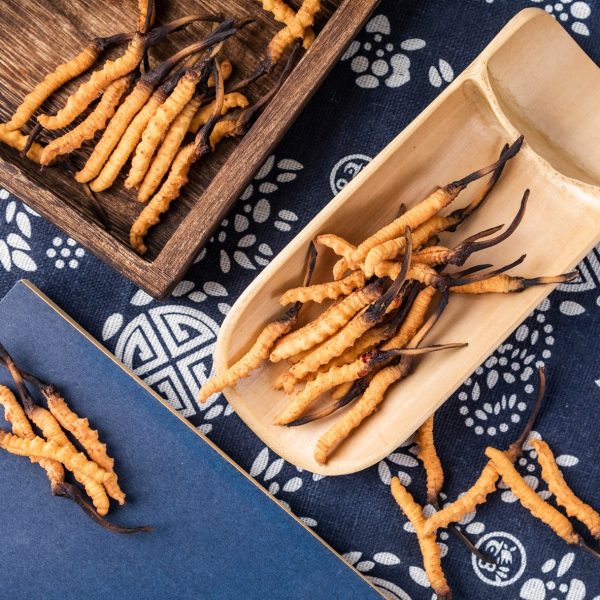-
How does it feel?
Bhumiamalaki is an erect tropical annual herb, growing 40-70cm height. It is glabrous and stems often branch from the base. It is commonly found in coastal areas and edges of cultivated fields.
The leaves are small green, elliptic oblong shaped, obtuse and they are arranged alternatively on each side of the stem. They resemble those of Amalaki.
The flowers are yellowish, small and axillary. These are unisexual and the male flowers are one to three in number while the female flowers are solitary in nature. The fruit is a smooth capsule, very small (2 – 3mm in diameter) depressed globose, smooth and scarcely lobed.
-
What can I use it for?

Bhumiamalaki leaves (Phyllanthus amarus) Ayurveda considers the plant astringent, sour and cooling in action.
Bhumiamalaki is a small herb, having wide range of medicinal properties thanks to its good range of bioactive molecules such as lignans, flavonoids, triterpenes and tannins.
Traditionally this plant is used for treating liver related diseases, such as chronic hepatitis. But, it can be used for treating kidney stones, gallbladder stones or as a diuretic, correcting any obstructions in the urinary flow and reducing urinary infections or any burning sensations.
The whole plant is used in gonorrhoea, menorrhagia and other genital affections.
Extracts of Bhumiamalaki can encourage a good inflammation response, particularly within the digestive system and it is used as a stomachic, anti-spasmodic, laxative and carminative, reducing constipation or dysentery.
-
Into the heart of bhumiamalaki

Bhumiamalaki plants (Phyllanthus amarus) Bhumiamalaki is a hypotensive and hepato protective and it has antiviral activities against hepatitis B. It has been reported to exhibit marked antihepatitis B virus surface antigen activity in vivo and in vitro studies. Its protein fractions protect liver tissues against oxidative stress by improving ant oxidative defence.
Bhumiamalaki is an excellent remedy for stones interfering in the growth and aggregation of calcium oxalate crystals and preventing the growth of calculi.
It can also decrease the urinary calcium levels and the excess uric acid thanks to the action of the lignans.
The leaves contain an alkaloid (phyllanthoside) which has a strong antispasmodic activity, helping to relax the smooth muscles in the digestive tract and to reduce hyperacidity and inflammations. Bhumiamalaki is used also to increase appetite and produce laxative effects or reducing dysentery symptoms, thanks to its bitter, sweet and astringent properties. It’s bitter taste but sweet post digestive effect (vipaka) also make it an effective astringent.
Bhumiamalaki demostrates lipid-lowering activities in those with high cholesterol levels.
-
Traditional actions
Herbal actions describe therapeutic changes that occur in the body in response to taking a herb. These actions are used to express how a herb physiologically influences cells, tissues, organs or systems. Clinical observations are traditionally what have defined these actions: an increase in urine output, diuretic; improved wound healing, vulnerary; or a reduction in fever, antipyretic. These descriptors too have become a means to group herbs by their effects on the body — herbs with a nervine action have become the nervines, herbs with a bitter action are the bitters. Recognising herbs as members of these groups provides a preliminary familiarity with their mechanisms from which to then develop an understanding of their affinities and nuance and discern their clinical significance.
-
Traditional energetic actions
Herbal energetics are the descriptions Herbalists have given to plants, mushrooms, lichens, foods, and some minerals based on the direct experience of how they taste, feel, and work in the body. All traditional health systems use these principles to explain how the environment we live in and absorb, impacts our health. Find out more about traditional energetic actions in our article “An introduction to herbal energetics“.
Western energetics
-
Did you know?
Numerous studies indicate that bhumiamalaki from India should be used – the species found in India is actually Phyllanthus amarus but it is often erroneously named as Phyllanthus niuri. This variety is actually native to the West Indies and is not found in India.
The juice of the roots along with milk consumed twice a day, early in the morning and at bedtime, is a good cure for jaundice.
Additional information
-
Safety
No drug herb interactions are known.
-
Dosage
Tincture: 5–15ml of a 1:5 at 25% tincture
Dried: 1–6g/day

-
References
- Borrelli F, Capasso R, Aviello G, et al (2005). Effectiveness and safety of ginger in the treatment of pregnancy-induced nausea and vomiting. Obstet Gynecol. 105(4): 849-56
- Chaiyakunapruk N, Kitikannakorn N, Nathisuwan S, Leeprakobboon K, Leelasettagool C. The efficacy of ginger for the prevention of postoperative nausea and vomiting: a meta-analysis. Am J Obstet Gynecol. 2006;194(1):95–99
- Lien HC, Sun WM, Chen YH, Kim H, Hasler W, Owyang C. Effects of ginger on motion sickness and gastric slow-wave dysrhythmias induced by circular vection. Am J Physiol Gastrointest Liver Physiol. 2003;284(3): G481–G489
- Haniadka R, Saldanha E, Sunita V, et al. (2013) A review of the gastroprotective effects of ginger (Zingiber officinale Roscoe). Food Funct. 4 (6):845–855.
- Al-Nahain A, Jahan R, Rahmatullah M. (2014) Zingiber officinale: A Potential Plant against Rheumatoid Arthritis. Arthritis. 159089.
- Srivastava KC, Mustafa T. (1992) Ginger (Zingiber officinale) in rheumatism and musculoskeletal disorders. Med Hypothesis 39: 342-8
- Wilson PB. (2015) Ginger (Zingiber officinale) as an Analgesic and Ergogenic Aid in Sport: A Systemic Review. J Strength Cond Res. 29(10): 2980–2995.
- Daily JW, Zhang X, Kim DS, Park S. (2015) Efficacy of Ginger for Alleviating the Symptoms of Primary Dysmenorrhea: A Systematic Review and Meta-analysis of Randomized Clinical Trials. Pain Med. 16 (12): 2243–2255.
- Grzanna R, Lindmark L, Frondoza CG. (2005) Ginger – an herbal medicinal product with broad anti-inflammatory actions. J Med Food. 8(2): 125–132.
- Mao QQ, Xu XY, Cao SY, et al. (2019) Bioactive Compounds and Bioactivities of Ginger (Zingiber officinale Roscoe). Foods. 8(6): 185.
- Wang J, Ke W, Bao R, Hu X, Chen F. (2017) Beneficial effects of ginger Zingiber officinale Roscoe on obesity and metabolic syndrome: a review. Ann N Y Acad Sci. 1398 (1): 83–98.
- Ebrahimzadeh Attari V, Malek Mahdavi A, Javadivala Z, et al. (2018) A systematic review of the anti-obesity and weight lowering effect of ginger (Zingiber officinale Roscoe) and its mechanisms of action. Phytother Res. 32(4): 577–585
- Baliga MS, Haniadka R, Pereira MM, et al. (2012) Radioprotective effects of Zingiber officinale Roscoe (ginger): past, present and future. Food Funct. 3(7): 714–723.
- Tosun B, Unal N, Yigit D, et al. (2017) Effects of Self-Knee Massage With Ginger Oil in Patients With Osteoarthritis: An Experimental Study. Res Theory Nurs Pract. 31(4): 379–392.
- Paritakul P, Ruangrongmorakot K, Laosooksathit W, et al. (2016) The Effect of Ginger on Breast Milk Volume in the Early Postpartum Period: A Randomized, Double-Blind Controlled Trial. Breastfeed Med. 11: 361–365

